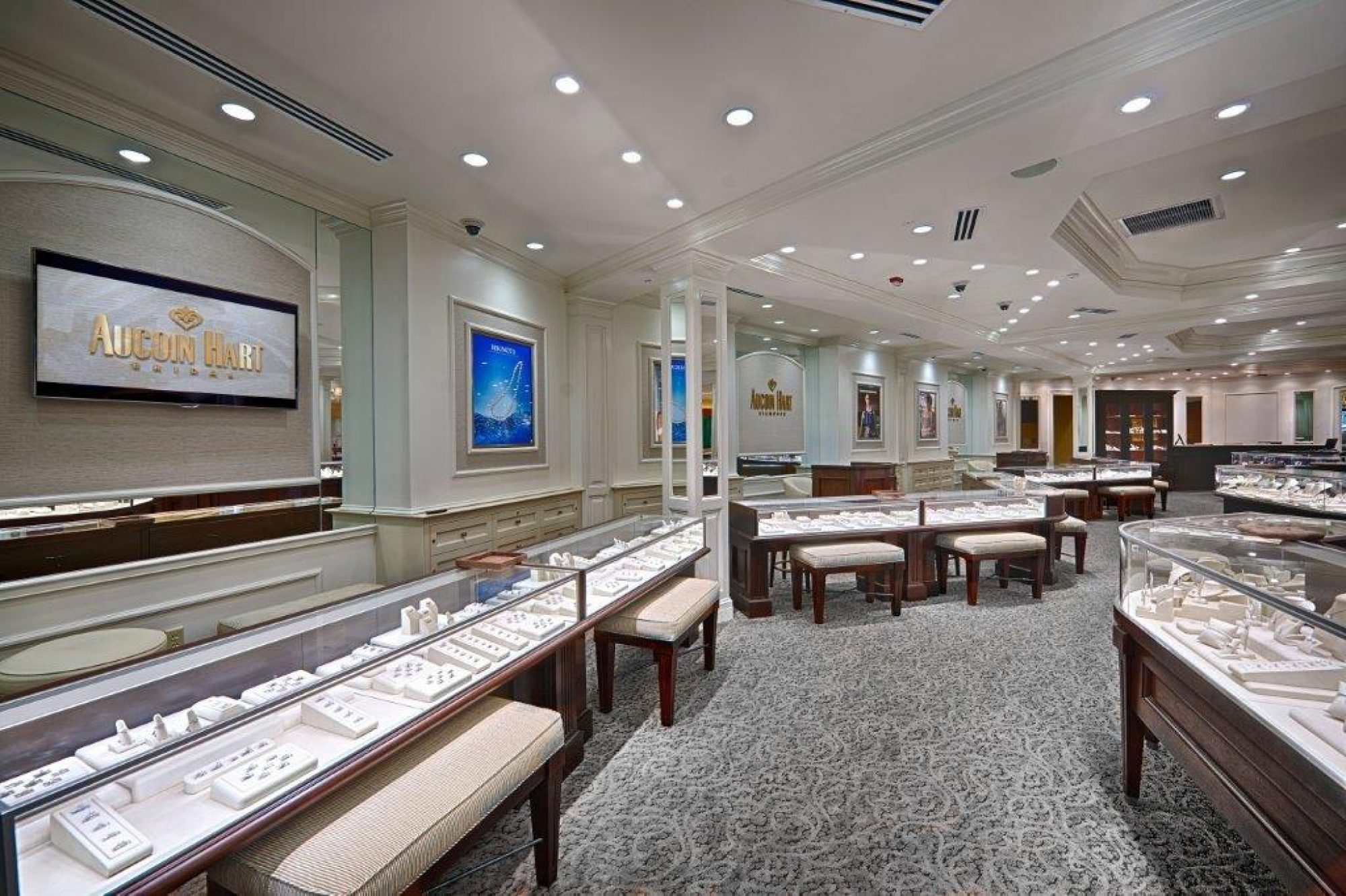Industry reports will tell you that the average independent retail jeweler has about 2000 sq ft of store, of which 1300sq ft or so is actual selling space. The same JA report has the average sales volume as $750,000 in volume.
Simple math tells us that this mythical “average” store therefore sells $576.92 per sq foot of floor space ($750,000/1300=$577). Seems simple enough, but it is often difficult for retailers to develop a specific action plan as to how to achieve a 20% increase in sales based on a average that takes into account space in the bathrooms.
Perhaps a more telling test of the sales efficiency of a store is more accurately calculated in sales per square foot of showcase space. The showcases are where the selling action occurs. Let’s adjust these numbers to reflect more specific selling areas where we can develop a selling strategy and track its results.
It is easy to do with just a few calculations and a few easy steps
1.) Calculate your store’s actual selling space.
If our store has 12 showcases, each about 5’ long, then the store has 60 feet of case (12 x 5’=60’). If the showcases are an average of 17” deep, that 60 linear feet will translate to 85 square feet of selling space (60’x 1.417 = 85sq ft). It is sobering that 85 sq ft. is a little over 4% of our total stores space. Add in the selling space in the wallcases and any other areas where merchandise is displayed to get a working total.
2.) Now take our $750,000 in merchandise sales. (For the purpose of this exercise, do not add in repairs and store services to this sales number) If we divide the $750,000 of sales by our 85 sq.ft, we see that we are selling an average of $8823 per square foot of selling space! Obviously, this sales number takes into account every square inch inside every case leaving no room for corners, nooks and crannies in your showcases. This dead space in addition to space occupied by trim, risers and tray frames, compounds the challenge as they all further reduce selling space.
3.) If we ignore these other space occupiers and just concentrate on the $8823 in sales per sq ft, we can now start to factor in our selling trays. Imagine an average 7 ring tray that is 8” x 4” in size. We remember from school (and from trips to Home Depot!) that there are 144 sq inches in a sq ft (12” x 12”) and this tray is 32 sq inches (8” x4”) , so the trays footprint works out to be about 22% of a sq ft. The sales target for this tray is therefore 22% of $8823 or $1941. An average tray this size must sell $1941 worth of merchandise each year to justify the space it occupies. If your trays are not meeting this goal, neither will your sales.
Obviously, the $8823 is only an average of all the cases in the store. To really make informed decisions about your cases, you need to set different goals for different cases, based on merchandise mix and price points. The picture changes when you consider a sales target for your diamond case instead of a silver case. You’ll want to consider each case individually and shoot for a store total that meets your selling goals.
Sales volume is only part of this analysis. You can go a step further and look at gross margin. If you take the JA average of a 49% gross margin overall, then the square foot sales of $8823 must result in $4323 in gross margin. Therefore when analyzing your stores sales, look deeper and look at how much you are making on that space.
By now your head is swimming (or drowning) with sales and margin calculations and the obvious question bubbles to the surface….What do I do with this information?
Here are some suggestions——–
- Evaluate your merchandise purchases in light of your sales per square foot requirements. Before you decide to stock any piece of jewelry, consider how much you will net and how much space it will require. If it doesn’t provide the profit target you require per square foot, don’t buy it unless you are willing to make up the shortfall somewhere else in the store.
- Consider adding more selling space. Additional case space gives you more room and reduces the sales requirement per square foot.
- Consider display trays with smaller footprints or that hold more capacity. You do not want to get carried away and diminish the appearance of your store, but a tray that holds 9 rings instead of 7, can help your cause. Avoid overly large trays that do not justify their size in sales volume.
- Keep your trays full. When a ring slot goes unfilled, you divert the sales burden to the other pieces in the case. A 12 ring tray with 3 empty slots uses the same footprint, but raises the sales goal per remaining slot by 33%.
- Develop a sales plan per case. Know what dollar sales goal you expect from each case. Know how much profit you want to make per case.
At the end of the day, you only have x amount of selling space in your store. If you are to make your overall sales goals, it has to happen in that space. Do not leave it to chance. Develop a strategy to maximize your use of that space and track your results. Overall store success will be the simple total result of adding up the individual successes of your stores showcases.
Do not hesitate to contact me if I can be of assistance to you on this or any other aspect of your stores success.
